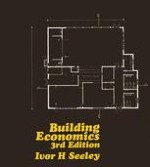1983 | Buch
Building Economics
Appraisal and control of building design cost and efficiency
verfasst von: Ivor H. Seeley, BSc, MA, PhD, FRICS, CEng, FICE, FCIOB, FIH
Verlag: Macmillan Education UK
Buchreihe : Macmillan Building and Surveying Series
Enthalten in: Professional Book Archive
